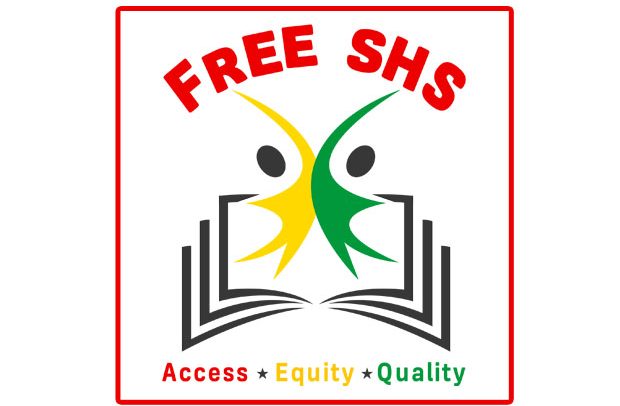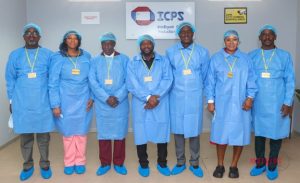
By Raymond DENTEH
Agriculture is the lifeblood of Ghana’s economy, contributing significantly to GDP, export earnings, and food security. Yet the sector remains chronically under-financed.
Smallholder farmers (SHFs), outgrower businesses (OBs), and other agribusinesses frequently operate without access to suitable credit, relying instead on loans that are either mismatched in tenor or too costly to sustain. The result is a financing environment that fuels inefficiencies, high default rates, and under-investment in productivity.
At the heart of Ghana’s agricultural transformation lies one undeniable truth: without appropriate financing, the sector’s potential cannot be unlocked. Why Appropriate Financing Matters?
Agriculture is inherently different from other sectors. Production cycles can be long, seasonality is pronounced, risks are high, and cash flows are irregular. Yet much of Ghana’s agri-finance still mirrors conventional commercial lending models, designed for trade or manufacturing. This mismatch, among other factors, has produced high non-performing loans (NPLs) and discouraged financial institutions (FIs) from lending further to agribusinesses.
Appropriate financing means structuring financial products that match the realities of farming and agribusiness operations:
- Tenors that align with crop cycles and asset lifespans.
- Repayment schedules that reflect harvest times and market contracts.
- Risk-sharing mechanisms—such as guarantees and insurance—that reduce exposure for lenders and farmers alike.
- Group-based models that leverage social trust to strengthen repayment behaviour.
Without such tailored approaches, credit will remain scarce, expensive, and ultimately ineffective.
The Scale of the Financing Gap
The financing gap in Ghana is vast. Estimates suggest that SMEs, including agribusinesses, face a US $5 billion shortfall in accessible financing. Regionally, the agri-SME financing gap in Sub-Saharan Africa is pegged at US $65 billion annually, with agriculture’s wider financing shortfall approaching US $180 billion. (https://agra.org/wp-content/uploads/2021/02/Mobilizing-agricultural-finance-2021-02.pdf?utm)

Alarmingly, despite agriculture employing nearly 30% of Ghana’s population, bank lending to agriculture and fisheries represents only 3.5% of total loans. Lending has stagnated, even after stimulus measures introduced during the COVID-19 pandemic.
Agricultural NPLs are as high as 25%, reflecting the mismatch between loan structures and agricultural realities. The regulatory framework also constrains innovation: banks are compelled to price loans using the Ghana Reference Rate (GRR), based on policy rates, T-bill rates, and interbank market costs, to which they add a risk premium. This drives lending rates upward, particularly in agriculture?USAID Policy Link, Ghana Agricultural Lending Assessment?.
These figures illustrate the magnitude of the challenge—and the lost opportunities. Every cedi of unmet financing translates into unrealised production, reduced food security, and heightened dependency on imports.
Outgrower Businesses and Smallholder Farmers in Ghana
Understanding the financing needs of Ghana’s agriculture requires clarity on the role of its key actors:
- Smallholder Farmers (SHFs): Typically cultivating between 1 and 5 acres of land on average, SHFs produce much of Ghana’s staple food. They face chronic challenges: lack of collateral, high exposure to climate risks, and limited bargaining power. Their fragmented production scale makes it difficult for them to access formal financing individually.
- Outgrower Businesses (OBs): These anchor producer-firms that also coordinate networks of SHFs, linking them to inputs, mechanisation, extension services, and markets. By aggregating SHF output into commercially viable volumes, OBs serve as natural conduits for finance. In Ghana, OBs are vital in maize, rice, soy, and poultry feed supply chains. Credit to OBs can indirectly reach hundreds of SHFs, lowering transaction costs for FIs while improving farmers’ market access.
The SHF–OB relationship is therefore central to agricultural commercialisation in Ghana. Yet both struggle with financing gaps: OBs need working capital for aggregation and service delivery, while SHFs require affordable seasonal loans for inputs and labour.
Case Study: A Maize OB in Northern Ghana
In the Northern Region, a maize OB can support a network of 600 SHFs cultivating an average of 2 acres each. Each farmer may require approximately GHS 4,000.00 per acre per season for seeds, fertiliser, chemical and services (bundled with agricultural insurance). Collectively, the OB needs close to GHS4,800,000.00 in working capital annually to support the SHFs alone.
FIs usually demand collateral such as land titles—things that OBs and their SHFs often lack, or that may exist in areas where their market value is low. In practice, the OB relies on informal credit at exorbitant rates, forcing it to pass the cost onto SHFs.
The consequence is under-application of fertiliser, late planting, and reduced yields—farmers harvesting 1.8–2.0 metric tons of maize per acre when they could reach 3.5–4.0 metric tons with optimal input use.
With appropriate financing:
- A guarantee-backed credit facility tied to the OB’s off-take contracts with processors would unlock affordable liquidity.
- Bundling crop insurance into the facility would de-risk production, reducing FIs’ risk and hesitation.
- Repayment could be structured around the OB’s aggregation and sales cycle, ensuring cash flow matches obligations.
In such a scenario, yields could nearly double, farmer incomes could rise by 40–50%, and the OB would be able to scale operations sustainably.
Climate Change: An Additional Layer of Risk
Beyond structural financing challenges, Ghana’s farmers face a growing and existential threat: climate change. Rising temperatures, erratic rainfall patterns, prolonged dry spells, and frequent floods are already undermining agricultural productivity.
Maize yields, for example, have shown significant year-to-year volatility in Northern Ghana due to unpredictable rainfall. Shea and cocoa systems, equally vulnerable, are at risk of declining productivity under shifting climatic conditions.
The risks posed by climate change exacerbate the financing dilemma:
- Farmers who cannot access irrigation or drought-tolerant seed varieties lose entire harvests when rains fail.
- FIs, wary of unpredictable yields, may increase interest rates or withdraw altogether from agricultural lending.
- Extreme weather events amplify the vulnerability of SHFs, eroding their capacity to repay loans and perpetuating the perception of agriculture as “too risky.”
Addressing Climate Risks through Finance
- Parametric and index-based insurance can cushion both farmers and lenders by triggering payouts when rainfall or yield falls below set thresholds.
- Climate-smart input financing can promote adoption of drought-tolerant seeds, improved soil fertility management, and water-efficient irrigation systems.
- Blended finance models can crowd in private capital for climate-resilient infrastructure such as dams, mechanised boreholes, and community-level storage facilities.
- Green credit lines can incentivise OBs and SHFs to adopt renewable energy for mechanisation and processing, reducing both costs and emissions.
In short, appropriate financing for agriculture must be climate-smart financing. Any approach that fails to integrate climate considerations will be incomplete.
Towards a Fit-for-Purpose Agri-Finance Ecosystem
These case studies and climate realities demonstrate the real costs of inappropriate financing and the transformational potential of fit-for-purpose solutions. Ghana’s agri-finance needs to embrace:
- Guarantee-backed lending to reduce risk for lenders.
- Insurance-integrated credit to cushion against climate and production shocks.
- Contract-linked repayment to align financing with structured market demand.
- Long-term asset financing to support tractors, silos, irrigation, and warehouses with realistic repayment schedules.
- Climate finance instruments that prioritise resilience, adaptation, and low-carbon growth.
Building Confidence Among Financial Institutions
FIs in Ghana often cite agriculture as too risky. But in truth, the risk lies not in agriculture itself but in the absence of appropriate financing models. The maize OB in Northern Ghana shows how contract-linked, insurance-bundled financing could unleash productivity and the cost of mismatched loans. Climate change compounds these risks but also makes the case for a stronger, climate-smart financial ecosystem.
By adopting tailored approaches, FIs can turn agriculture into a profitable, resilient portfolio segment—diversifying risk and tapping into a sector with immense growth potential.
The Way Forward
Ghana’s agriculture does not lack potential—it lacks financing that is structured to meet its realities. Without appropriate financing, SHFs will remain trapped in low productivity, OBs will struggle to scale, and the nation will continue to rely heavily on imports. Climate change adds urgency: financing must not only be appropriate but also climate-smart, embedding tools that safeguard against volatility and long-term risks.
The way forward is clear: design and deploy fit-for-purpose financial instruments that reflect agricultural timelines, risks, and opportunities, while integrating climate resilience. By targeting both OBs and SHFs with appropriate, climate-smart solutions, Ghana can transform agriculture into a sector that is not only resilient but also competitive and inclusive—driving food security, job creation, and sustainable economic growth.
The post Unlocking agricultural potential through appropriate financing appeared first on The Business & Financial Times.
Read Full Story

















Facebook
Twitter
Pinterest
Instagram
Google+
YouTube
LinkedIn
RSS